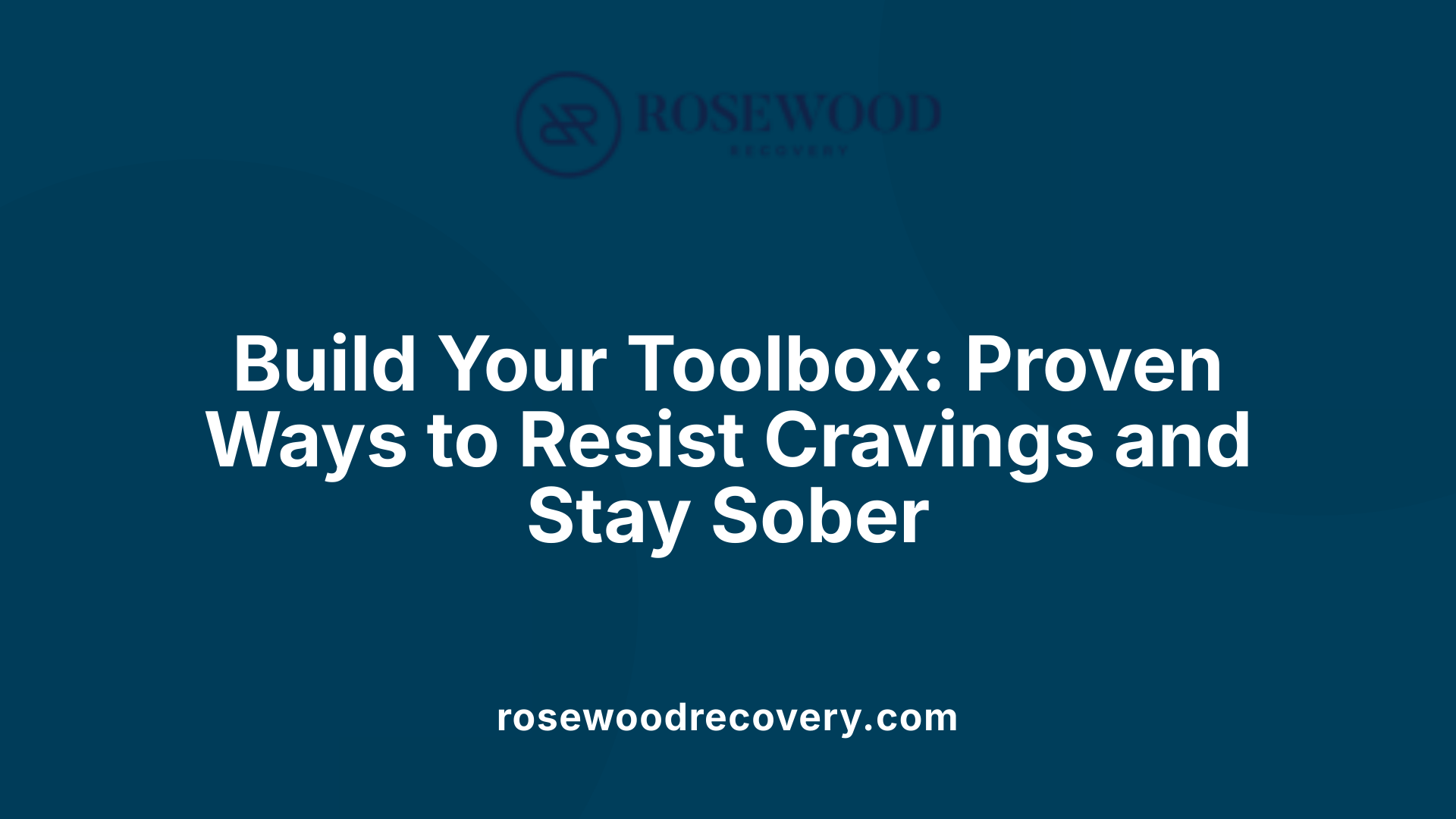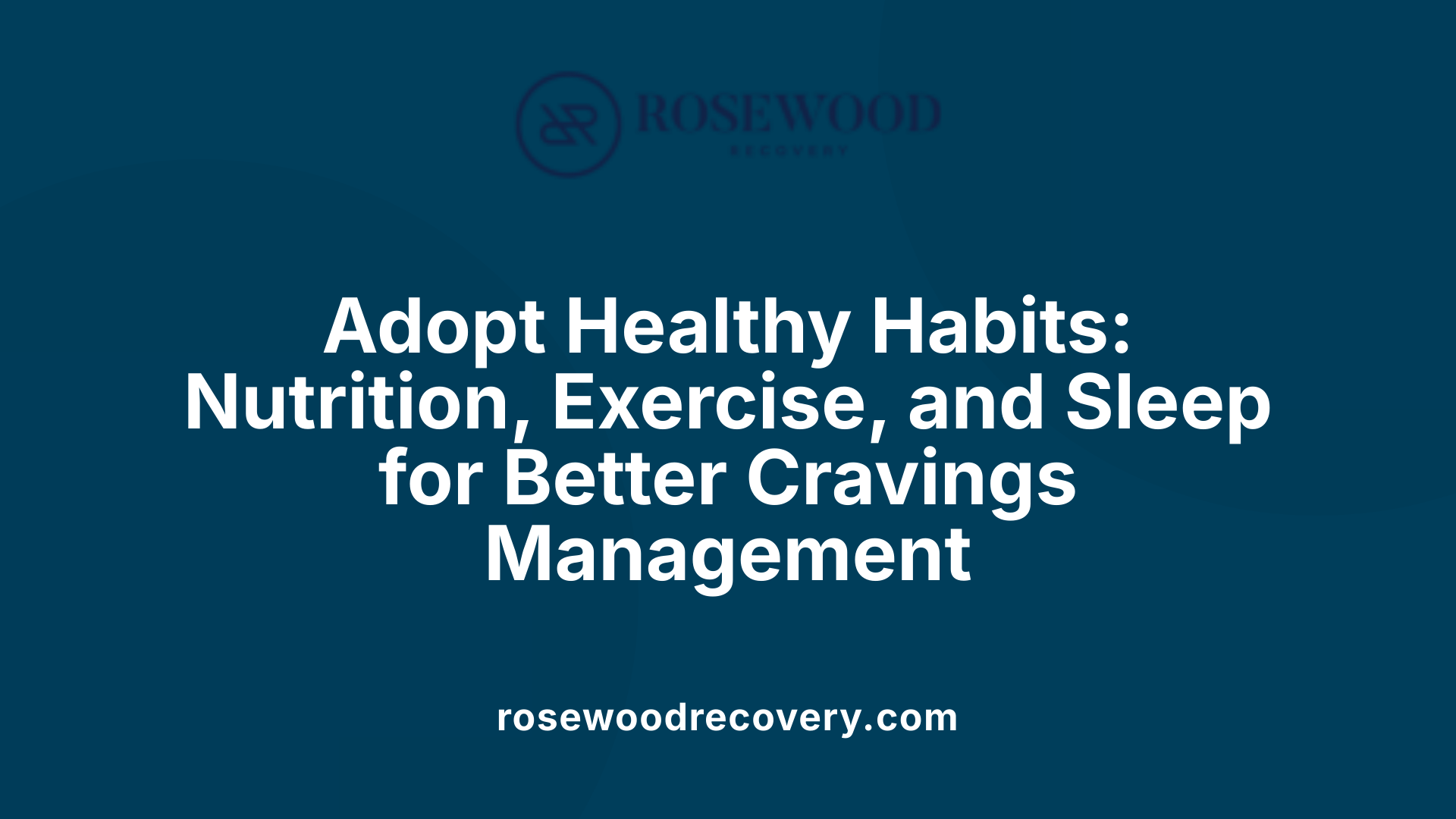How to deal with cravings during outpatient rehab
Navigating the Journey of Sobriety: Strategies to Overcome Cravings in Outpatient Treatment

Understanding and Managing Cravings in Outpatient Rehab
Cravings are an inevitable part of addiction recovery, especially during outpatient rehab. They are powerful urges driven by changes in brain chemistry and triggered by environmental or emotional stimuli. Recognizing the nature of cravings and implementing effective strategies is vital for maintaining sobriety. This article provides comprehensive guidance on understanding cravings, identifying triggers, and employing practical techniques to manage them successfully during outpatient treatment.
The Nature and Duration of Cravings in Recovery
Cravings are an inherent part of the recovery journey, often appearing at unpredictable times and varying in intensity. In most cases, cravings peak in the early days or weeks after quitting substance use, particularly within the first 90 days. During this initial period, they tend to be intense and frequent, usually lasting between 5 to 30 minutes. However, certain triggers such as environmental cues, emotional states, or social situations can cause cravings to extend longer, sometimes persisting for an hour or more.
As recovery progresses, physical cravings generally decrease as the brain begins to rewire and regain balance. This adjustment process can take several months and is influenced by individual factors like the severity of addiction and treatment approaches. Psychological cravings—those driven by emotional triggers or habitual thoughts—may linger much longer, sometimes lasting months or even years. Over time, these cravings typically become less predictable and less intense, but they still require careful management.
Understanding the pattern of cravings can empower individuals in recovery. Recognizing that cravings are temporary and part of the healing process can reduce emotional distress. Effective management involves a combination of acceptance, distraction techniques, mindfulness practices, and a robust support system. Strategies such as keeping a journal of cravings, engaging in new hobbies, practicing relaxation exercises, and seeking ongoing therapy help in handling persistent urges.
Overall, cravings do diminish with time and proper care, but their unpredictability highlights the importance of preparation and resilience. By understanding their usual duration and triggers, individuals can better navigate cravings and sustain long-term sobriety.
Common Triggers and Their Role in Craving Formation

What are common triggers for cravings, and how can understanding them aid in addiction recovery?
In addiction recovery, recognizing what triggers cravings is crucial for maintaining sobriety. Common external triggers include environments and situations linked to past substance use, such as being around certain people, specific places, or during social events that evoke memories of drug or alcohol use. These visual or olfactory cues can involuntarily prompt the desire to relapse.
Internal triggers are equally influential and involve emotional or mental states like stress, anxiety, depression, or boredom. Intrusive thoughts, feelings of loneliness, or even recalling past substance use can generate intense cravings. These internal cues often operate beneath conscious awareness but are powerful enough to trigger urges.
Understanding these triggers helps individuals develop effective coping mechanisms. For example, journaling can aid in identifying specific patterns or moods linked to cravings. Mindfulness techniques increase awareness of internal states, allowing for a calmer response to urges. Building a strong support system, engaging in new hobbies, and avoiding high-risk situations further bolster resilience.
Recognizing triggers enables tailored strategies such as leaving a triggering environment, practicing deep breathing, or distraction through activities like exercise or art. This proactive approach not only diminishes the power of triggers but also reduces the likelihood of relapse.
Knowing that triggers are usually linked to specific cues and that cravings are temporary helps individuals stay committed to recovery. Developing a personalized plan to manage external and internal triggers equips people with the tools to face challenges confidently. Ultimately, heightened trigger awareness is fundamental to sustaining sobriety and navigating the complex landscape of addiction.
How does recognizing triggers help prevent relapse?
When individuals accurately identify their triggers, they can implement early interventions to prevent cravings from escalating. This involves setting boundaries—avoiding certain social settings or environments—and practicing stress management techniques. Through ongoing awareness, the cycle of craving, relapse, and emotional distress can be interrupted.
In summary, understanding both external and internal triggers forms the backbone of effective relapse prevention. It empowers recovering individuals to anticipate potential challenges, respond adaptively, and stay aligned with their recovery goals.
Practical Strategies for Managing Cravings in Outpatient Settings

What strategies can help manage cravings during outpatient rehab?
Managing cravings in outpatient rehab requires a proactive approach centered on recognizing triggers and employing effective coping strategies. One fundamental step is identifying and avoiding environmental or emotional triggers, such as stressful situations, social settings associated with previous substance use, or certain places and people connected to past usage. Creating a plan for how to respond to these triggers—such as leaving tempting environments or calling a supportive individual—can significantly reduce the risk of relapse.
Developing and practicing healthy coping skills is also crucial. Engaging in physical activity, such as walking, biking, or yoga, helps release endorphins, improves mood, and serves as a distraction from cravings. Pursuing hobbies like painting, cooking, reading, or playing an instrument can occupy the mind and give a sense of purpose. Relaxation techniques such as deep breathing, mindfulness meditation, or progressive muscle relaxation reduce stress and emotional distress that often accompany cravings.
Maintaining a strong support network plays a vital role. Regularly connecting with support groups, sponsors, friends, or family provides encouragement and accountability. Sharing feelings and experiences during moments of craving can lessen their power and reinforce commitment to sobriety.
Mindfulness practices, including visualization and cognitive techniques, are effective tools. Visualizing the negative consequences of relapse, often called “playing the tape through,” can remind individuals of their motivations. Practicing mindfulness helps increase awareness of present emotions and sensations, making it easier to accept and ride out cravings without acting on them.
Building boundaries with others and establishing personal response plans—such as engaging in specific activities or calling a support person—further enhance one's ability to handle cravings successfully. Overall, combining trigger avoidance, healthy coping strategies, a solid support system, and mindfulness creates a comprehensive approach to craving management in outpatient rehab settings, helping to sustain recovery and prevent relapse.
Effective Techniques for Coping and Resisting Cravings

What are effective techniques for coping with cravings during recovery?
Recovering individuals often face intense urges, known as cravings, which stem from changes in brain chemistry and emotional triggers. Managing these urges effectively is crucial for maintaining sobriety. Several strategies have proven helpful.
Distraction activities are one of the most accessible tools. Engaging in hobbies like painting, playing music, or reading can redirect attention away from cravings. Physical activities such as walking, biking, or participating in sports release endorphins, boosting mood and reducing the intensity of urges. Listening to calming music or practicing creative pursuits can also serve as healthy outlets.
Relaxation methods complement distraction by helping to calm the mind and body. Deep breathing exercises, mindfulness meditation, and visualization techniques have shown to decrease stress levels. For example, focusing on slow, deep breaths can reduce sympathetic nervous system activity, which often escalates cravings. Visualization involves imagining oneself successfully resisting the urge and visualizing positive outcomes of staying sober.
Cognitive-behavioral strategies provide a way to challenge and reframe automatic thoughts that fuel cravings. The urge surfing technique involves observing the craving without acting on it, recognizing it as temporary, and letting it pass naturally. Challenging irrational beliefs, such as “I need to use now” or “I can’t handle this,” helps weaken their power.
Establishing a routine and prioritizing self-care play important roles. Regular meal times, consistent sleep schedules, and personal care routines increase overall stability. Engaging in supportive networks—support groups, therapists, or sober friends—can provide emotional reinforcement and accountability.
Integrating these methods into daily life can bolster resilience against cravings and support sustained recovery. Developing a personalized toolbox of coping strategies ensures individuals are prepared to face triggers effectively, reducing the risk of relapse and encouraging long-term sobriety.
The 4 D's of Craving Management in Relapse Prevention

What are the 4 D's of craving management in relapse prevention?
Managing cravings effectively is a critical aspect of relapse prevention in addiction recovery. The 4 D's provide a simple yet powerful framework to help individuals cope with intense urges to use substances. These strategies include Delay, Distract, Deep breathing, and De-catastrophize.
Delay involves postponing action when a craving hits. Instead of giving in immediately, individuals are encouraged to wait at least 20 minutes. During this time, cravings often weaken naturally, reducing the likelihood of relapse.
Distract focuses on engaging in alternative activities that shift attention away from the urge to use. Common distractions include walking, working on puzzles, listening to music, or drinking water. These activities help the brain refocus on positive, healthy pursuits.
Deep breathing, also called de-stressing, is a technique used to calm the nervous system during a craving. By taking slow, deep breaths, individuals can reduce stress and anxiety, restoring a sense of control and composure.
De-catastrophize involves challenging negative or catastrophic thoughts that may arise during cravings. Reminding oneself that cravings are temporary and that giving in will only lead to negative consequences helps build resilience and prevents panic.
These strategies, when practiced consistently, empower individuals to resist urges, minimize the risk of relapse, and support sustained sobriety. Integrating the 4 D's into daily routines can significantly enhance the recovery journey, making cravings more manageable and less threatening.
Building a Supportive Environment and Healthy Lifestyle

How can physical health and environment support cravings management?
Maintaining good physical health plays a vital role in managing cravings during addiction recovery. A balanced diet rich in proteins, healthy fats, complex carbohydrates, and essential vitamins and minerals helps restore nutrients that drugs and alcohol may deplete, supporting overall well-being. Proper nutrition stabilizes blood sugar levels and mood, reducing emotional triggers linked to cravings.
Regular exercise is another powerful tool. Engaging in activities like walking, biking, yoga, or sports releases endorphins—natural mood lifters—that can help diminish feelings of stress and anxiety that often lead to cravings. Exercise not only boosts physical health but also provides a healthy distraction, helping the mind focus away from urges.
Sleep quality is equally important. Adequate rest restores energy, enhances emotional resilience, and improves cognitive function. When well-rested, individuals are better equipped to handle triggers and resist cravings.
Creating a supportive environment by removing triggers is critical. This includes avoiding high-risk settings, staying away from people or places associated with past substance use, and establishing routines that promote sobriety. Enlisting support from family, friends, or support groups adds accountability and emotional backing.
Finally, a holistic approach that combines healthy habits with an environment free of triggers fosters resilience. It supports long-term recovery by reducing vulnerability to cravings, improving mental health, and encouraging positive lifestyle choices. This comprehensive strategy helps individuals build strength and stability, making relapse less likely.
Empowering Long-Term Sobriety with Knowledge and Support
Cravings are a complex but manageable aspect of addiction recovery. Understanding their nature, recognizing triggers, and applying a variety of strategies—from mindfulness and distraction to emotional regulation techniques—can greatly enhance the success of outpatient rehab. Building a supportive environment, maintaining physical health, and developing a relapse prevention plan are essential for sustaining long-term sobriety. Remember, cravings are temporary, and with the right tools and support, individuals can navigate them confidently. Staying connected with professionals, support groups, and loved ones is crucial for ongoing recovery. Empower yourself with knowledge, patience, and resilience on your journey toward a healthier, substance-free life.
References
- National Helpline for Mental Health, Drug, Alcohol Issues - SAMHSA
- Managing Triggers & Cravings in Addiction Recovery - PaRC
- Addiction Recovery: Tips to Manage Cravings
- How to Handle Cravings After Rehab - Serenity Treatment Center
- Managing Cravings in Substance Abuse Disorders - Ethos Wellness
- Navigating Triggers During Drug Rehab in Arizona
- 4 Simple Tips to Help You Get Through Cravings
- Addiction Recovery Services - University of Utah Health
- 5 Strategies for Managing Cravings in Recovery - Gateway Rehab
- 5 Ways to Crush Crystal Meth Cravings - Michael's House
More Articles
Recovery Begins Here
Click below to get in touch and schedule a consult call with our team to begin your journey towards happiness and freedom.
Rosewood Recovery does not discrimate against any person because of the race, color, religious creed, ancestry, age, sex, sexual orientation, gender identity, national origin, handicap or disability or the use of a guide or support animal because of the blindness, deafness or physical handicap.



.jpeg)

